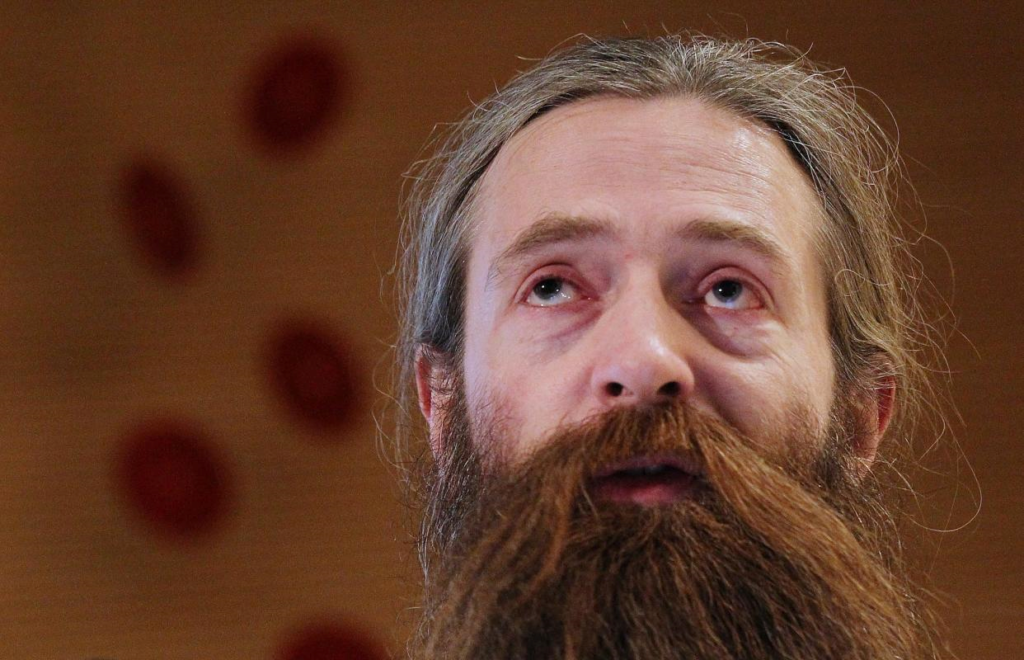Some scientists seriously believe we could live forever by the 2030s. Here’s what you need to know about the ‘longevity escape velocity’ theory.

- Longevity Escape Velocity is a theory that posits we may soon reach a point where aging is optional.
- Its backers say achieving this state just requires enough ambition and money — plus maybe some AI.
- Serious scientists are excited about the possibility of anti-aging drugs. But we don’t have any yet.
Eternal youth-seekers and investors alike are getting increasingly excited about a concept called “Longevity Escape Velocity.” This hypothetical idea borrows its name from “escape velocity,” the basic physics principle which states that objects can, at a certain speed, defy gravity’s pull.
Longevity escape velocity suggests, similarly, that at some point in the not-too-distant future people will be able to escape the debilitating pull of death — and live indefinitely. Longevity escape velocity is our ticket to immortality. If only science could figure out how to cash it in.
While LEV is only a theory for now, its backers contend that it could be a reality in not too many decades, given the rapid advances in aging science. As we get better at rejuvenating our cells, we will be able to improve the quality of our lives so exponentially that people will be increasing their life expectancy faster than they’re living, thus approaching a near-immortal state, or so the theory goes.
Harvard geneticist George Church has entertained the idea that maybe, just maybe, we’ll reach this state within your lifetime, reader. Sourav Sinha, head of strategy at the Longevity Vision Fund, said much the same during a recent panel discussion about stopping age-related diseases in New York, suggesting LEV could be possible within a couple of decades, with the right kinds of investments.

Longevity researcher Aubrey de Grey, one of the originators of the term, and perhaps its fiercest proponent, has put a very rosy, best-case scenario for LEV impossibly close — somewhere in the 2030s. Futurist Ray Kurzweil has suggested an even earlier debut for LEV, perhaps by 2028 or 2029, which would not be enough time for authorities to approve any anti-aging drugs or treatments (we have none so far.)
And now, a growing number of leading pioneers in anti-aging research are signing on to a new “Dublin Longevity Declaration,” which calls on their entire field of science to focus on reversing biological aging processes at the cellular level. Trying to improve aging the old-school way, by going after one disease at a time, is “overly pragmatic” and taking too long, the declaration says.
“Everyone knows aging is bad, everyone says it’s bad, but nobody does anything about it,” de Grey said in a release when his new declaration was announced in early October. “Like bad weather – people are stuck in the assumption that nothing can be done, even if we try. We wanted to put that assumption to rest.”
Geroscientist Thomas Perls, who’s been conducting one of the world’s largest and most rigorous studies of centenarians, says that while trying to prevent age-related diseases is a valiant cause, the idea of some momentous Longevity Escape Velocity taking over and giving us eternal life is backwards and silly.
“These billionaires, of course, they’ve seen: if you throw enough money at a particular problem, you solve it,” Perls told Insider.
Perls says he’s all for investors pouring billions of dollars into fighting specific age-related issues like Alzheimer’s, searching for a cure, or at least a way to dramatically delay disease. But he considers it a waste of time and energy to even consider how people might live indefinitely when we haven’t even figured out how to get most people to live in reliably good health beyond, say, 90 years old. Science hasn’t even properly untangled the genetic secrets of SuperAgers, who outlive others with their cognition and physical health largely intact.
“We want to do what we can do to delay or even avoid aging-related diseases that may increase life expectancy or life span a little bit for people,” Perls told Insider. “But in no way do I think that’s going to lead to the notion of living forever.”
He sees the new Dublin Declaration as a way to make the idea of Longevity Escape Velocity more palatable to the broader scientific community, folding it in with the serious work being done to find new drugs to fight aging, like senolytics, or other geroprotective pills.
Futurist and philosopher Nick Bostrom believes that trying to help people live healthier as they age can and must be our moral imperative. In 2005, he authored the revered short story, “Fable of the Dragon Tyrant,” about humanity coming together to defeat the monster of death.
Bostrom, who directs the Future of Humanity Institute at Oxford University, said the tale was more of a rallying cry than a fantasy. He expects we really could shape a future where humans survive for a very, very long time — perhaps a thousand years or so — all while feeling like 15-year-olds.
But he worries the pace of human-driven scientific progress is too slow, even with serious investments in longevity science.
“We could probably have been a bit further along now, if we had started more ambitiously 20, 30 years ago,” Bostrom told Insider.
What we really need is a supercharged kind of artificial intelligence in control, driving drug discovery, he said. Pharmaceutical companies are already exploring how they might use AI to pinpoint better treatments. Bostrom is looking ahead further, to a day when computers can completely solve biology’s woes (George Church, for one, is already using AI to develop new ways to edit out some of biology‘s downsides.) Just this week, longevity startup Gero announced it has raised $6 million dollars to develop its “large health model” in the hopes of finding new cures for some of the most common age-related diseases.
If AI is able to pinpoint an ultimate cure, or cures, for all the ills of aging, Bostrom expects we really could achieve an “indefinite lifespan” for humankind.
How society would handle such a radical shift remains an open question. “It’s going to be a complete transformation of so many things in human affairs that it really becomes hard to form a detailed, concrete picture of what life in that kind of world would look like,” he said.
Perls doesn’t even entertain a future in which humans can live to 1,000, or even 200 years old. He points out that the world’s oldest person, Jeanne Calment, lived to age 122 in 1997. No one else has come close to her record in the decades since. He doesn’t think that any advances in longevity science will be able to touch our biological limits, and he doesn’t buy the idea that rejuvenation is really possible.
“Nope. Let’s keep going with the healthspan,” he said.
There isn’t any drug available today that can reliably reverse-age people. Some of the most earnest attempts have failed spectacularly. Combating one age-related issue can in turn make other diseases like cancer more likely to appear.
“When you start tinkering with some of these basic mechanisms of aging, they’re there as a safeguard for some problems,” Perls said.
Kurzweil, the futurist, expects that by 2029 we should be able to claw back an entire year of life each year we live. After that, we’ll be flying backwards in time, he says.
But so far, in 2023, the only participants de Grey has signed up to test out his LEV rejuvenation treatments are mice. The Longevity Escape Velocity Foundation’s first study of “robust mouse rejuvenation” began earlier this year. The $3 million trial, funded entirely by donations, includes mouse stem cell treatments, telomere-lengthening gene therapies, and the cheap cancer pill rapamycin, all aimed at giving the mice one additional, healthy year.


Recent Comments